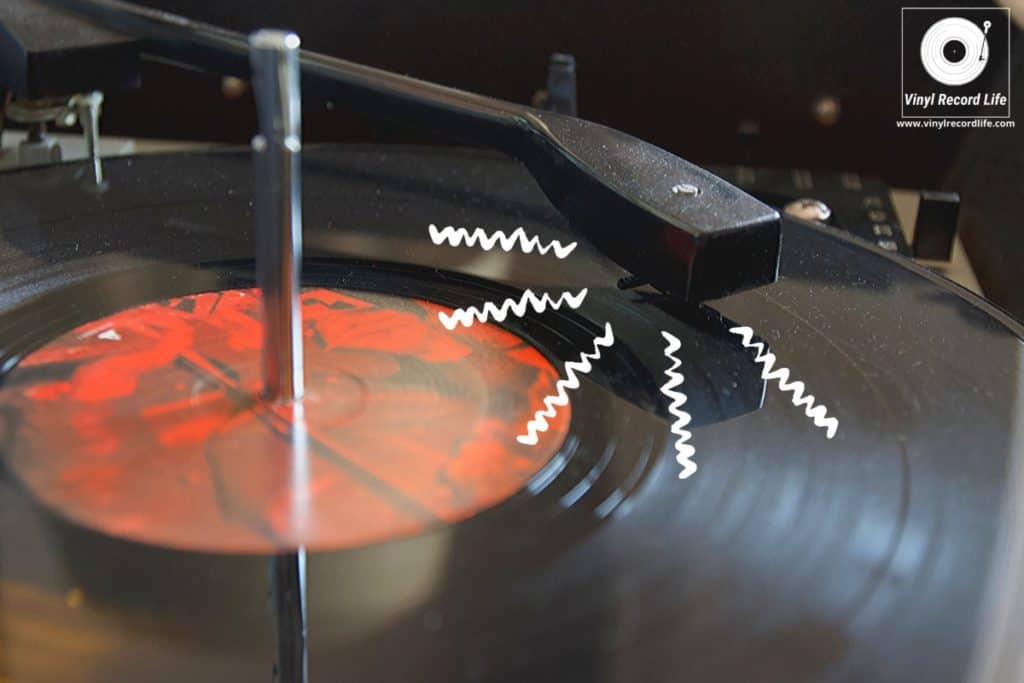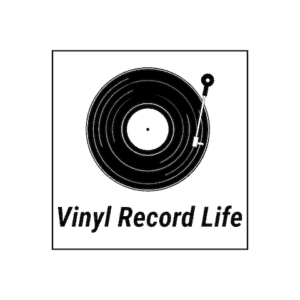
Listening to vinyl records is an experience like no other, and gives many of us a great deal of pleasure in the way not many other audio formats do. However, the constant strive for audio nirvana means there’s always some level of sound interference we’re trying to fix! Yes, we’re talking about audible crackle.
I wanted to know why crackle happens and what can be done to at least minimize, if not completely stop it. Hopefully what I found out will help you understand where crackle comes from, how to eliminate it on your own vinyl records, and enjoy a better listening experience because of it.
Vinyl records crackle for many reasons, the principle ones being:
- Static build-up.
- Embedded “organic” material, such as dirt and dust.
- Damage to the surface of the record grooves, including scratches.
- Pressing flaws during the creation process.
There are other contributing factors that cause crackle on records during playback, but those listed above are the major and most frequent reasons.
We’ll discuss these and some other causes of crackle on records below, and will also look at the best ways to help to minimize it. It’s also worth bearing in mind that for many vinyl lovers, a little bit of crackle just adds to the experience too!
What is Crackle on Vinyl Records?
First, it’s important to understand exactly what crackle is. Simply put, the crackle you hear through your speaker is the amplification in sound of an impurity or obstruction on the record surface. When the stylus encounters one of the above-listed issues the result will be either a crackle or a pop.
The Main Culprits of Crackle on Vinyl Records: Why Does It Happen?
We listed out the main reasons behind crackle on vinyl records above, but in order to understand how best to try and minimize crackle as much as possible we first need to understand what the causes of the above-mentioned issues are.
A dirty record is one of the most common reasons for crackle. Dust and dirt lodged in the record grooves act as an obstacle for your turntable’s stylus, and when the stylus hits one of these microscopic particles it will jump and create that popping sound associated with crackle.
Static build-up on the record is another very common cause of crackle. Vinyl tends to produce a fair amount of static electric charge, and that charge remains locked to the surface of the record until it can discharge itself (via your turntable’s stylus).
Static happens for two main reasons. The first is due to the friction between the turntable’s stylus and the actual groove of the record. The second frequent cause of static charge occurs when records are removed from their inner sleeves, which are made of plastic.
The static charge that accumulates in both these cases then translates into crackle when the record is played. As the disc spins a tiny, microscopic spark will pass from the record’s surface to the stylus as an electrical discharge. This is picked up by the turntable’s cartridge, amplified many times over by the preamp and then played out through your speakers. The result: crackle.
Another cause of crackle is the cleanliness, condition and set-up of the turntable’s stylus. As the stylus is the main contact point with the record’s surface, any dirt or dust on it will act in the same way as it does on the record itself, and cause more friction.
The stylus’ set-up is also important, as too much pressure on the stylus will drive it into the grooves of the record too heavily, damaging the groove and also resulting in crackle. Too little pressure will result in the stylus hopping out of the groove and can contribute to crackle. Always make sure your tonearm is well set-up, and if you’re experiencing issues check out our troubleshooting guide.
Damage to the surface and grooves of the record is another causal factor in record crackle, and one of the most common too. Even the best-cared for vinyl records are susceptible to some form of damage, such is the vulnerable nature of a disc, and scratches, groove malformations and other defects caused by wear and tear all contribute to a record surface that produces crackle when it comes into contact with a stylus.
Pressing flaws during the creation of a record – which are completely beyond a collector’s control – are also a potential factor. These can include a worn stamper, which results in a sub-par pressing of the record.
Contaminants mixed into the PVC – the base ingredient material of the vinyl disc – itself are also a potential cause of sound impurities that manifest as crackle, and in such cases it is even possible to see discolored oil streaks or fragments of paper in the actual record.
Impure, poor quality or recycled vinyl is also another reason, as the amount of impurities included in the finished disc result in a defective record surface, which in turn leads to reduced sound quality. Some records are just made to a better finished quality than others. It really can be that simple.
Is It Possible to Eliminate Crackle on Vinyl Records?
Due to the fact there are so many contributing factors to the cause of crackle on records, it’s practically impossible to eliminate it completely.
Therefore, managing the situation through some easily implemented preventative measures is the best way to deal with it, and thankfully the minimization of crackle is possible by following some easy steps.
Some Tips on How to Minimize Crackle on Your Vinyl Records
1. Store your records in anti-static inner sleeves. With static being one of the principle causes of crackle, a cheap, fast and effective method by which you can reduce its build-up is by using anti-static inner sleeves to store your records.
I recommend these as a great, affordable option – I use them myself and they do the trick.
2. Use an anti-static brush to clean your discs before playing them. A good cleaning routine is one of the foundations of a well-maintained record collection, and using an anti-static brush to clean your vinyl before giving it a spin will also help to remove the built-up static that’s ready to discharge itself via your stylus.
3. A deep clean goes a long way. A more thorough clean of your records will help to remove that nasty residue of dirt, dust and whatever else manages to find its way into the grooves of your vinyl. You’d be surprised just how dirty a record can get, so a deep clean is a great way to ensure minimal crackle and pop when you want to enjoy your music.
4. Clean your stylus and ensure it’s properly adjusted. It’s not just your record that will attract dust. As stated, your stylus can easily gather unwanted fluff and dirt, so be smart in keeping it in tip-top condition. Make sure it’s calibrated to the manufacturer’s specifications to ensure you’re getting the sweetest possible sound, and of course avoiding any unwanted crackle. And when it’s time to change the needle, get on it!
5. Prevent any avoidable damage by treating your records with some TLC. This one goes without saying, but it’s always worth repeating as it’s easy to fall into some lazy habits when handling records. Transferring your records to their covers as soon as you’ve finished with them and returning them to their place of storage is a practice that will minimize any risk of being scratched, dropped or stacked incorrectly.


